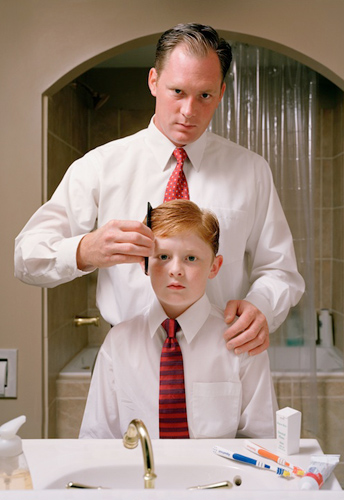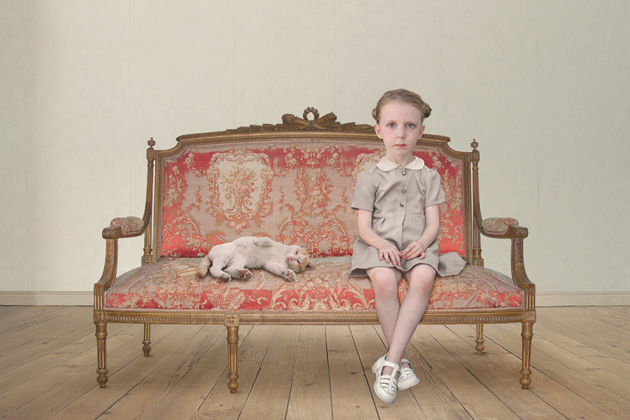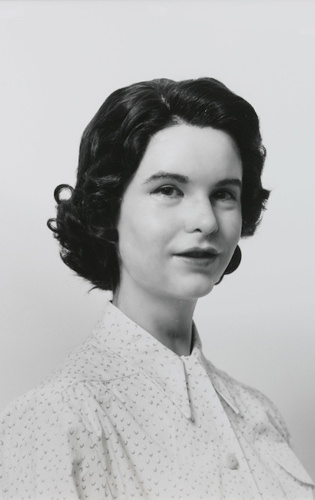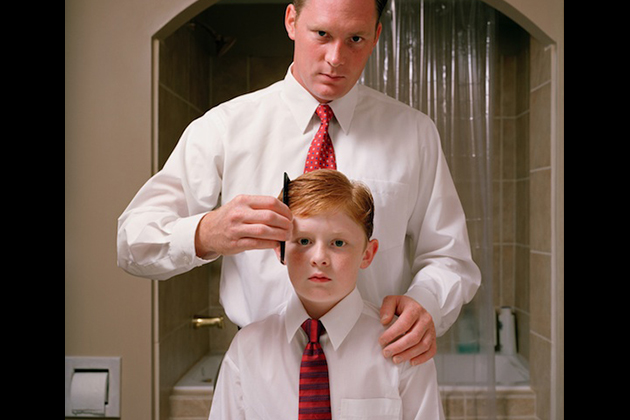
How the current Contemporary Art Galleries exhibition titled “UNCANNY” developed is a bit unusual, but not a strange or unexpected tale.
The multimedia exhibition, which continues through Oct. 25, marks a collaborative effort for Barry Rosenberg, director of CAG and associate professor of art, who developed the show with Micah Sizemore ’13 MA, his former graduate student assistant. It is the first time Rosenberg has collaborated with a student on curating a show.
In fulfilling the final project required for a graduate class in curatorial practice taught by Rosenberg and Anne D’Alleva, associate professor of art and women’s studies, Sizemore recalled a thesis she had written about “creepy art” based on Sigmund Freud’s essay “The Uncanny.” The essay describes the psychology of seeing something familiar in an unexpected place.

“I was always interested in the grotesque and the ways art can make people feel uncomfortable,” says Sizemore, who is now pursuing an advanced degree in library science to explore a career as an art librarian. “When I took the curatorial seminar, I came to this idea by accident, when I stumbled on the work of Lu Cong. There is a passage in Freud’s essay where he describes a piece of literature about a young man who falls in love with what he thinks is a human girl, but she turns out to be a doll. The eerie hyper-realism of Lu Cong’s work just clicks with this passage. I realized that the ‘uncanny’ would be a great angle for a curatorial proposal. Barry liked it.”
The final project required graduate students in the master of fine art and studio art programs to develop a proposal for an art exhibition based on their experience visiting art galleries, private collections, and art fairs to view a wide range of work, preparing the wall labels explaining each work to gallery visitors and learning about the business of art.
Rosenberg was thinking about curating a new exhibition based on some of the art he had seen during various gallery visits he had been making in New York City and in the region.

“It wasn’t that far off with Micah’s idea, in that it had to do with some pieces I was interested in. When I read Micah’s proposal I thought it had the nucleus of an interesting show,” he says. “My thought was about issues with the surreal, more built around some of the artists in this [UNCANNY] show. I drew it off Micah’s vision of the uncanny. In the class I had introduced her to the work of Loretta Lux, for example. I never would have been able to think the way Micah did. In the 30 something years I have done this, maybe twice I collaborated with someone on curating a show, but never before with a student. It showed the possibility of what can happen in the class. I was very excited by that fact.”

Rosenberg asked Sizemore to work with him on what would be this year’s opening exhibition for the Contemporary Art Galleries. “UNCANNY” includes works by photographer Angela Strassheim, painter Gillian Wearing, photographer Quentin Shih, sculptor Tony Matelli, painter Loretta Lux, and photographer Gregory Crewdson, among others.
“My experience with curating was theoretical at that point,” says Sizemore. “Barry had the connections to find works that I wasn’t able to find, which was important in pulling together [the exhibition] We discussed how closely a work would fit in with the Freudian ideas that anchored the exhibition. I kept my eyes open on my own exploration, and I was able to find a few more artists like Angela Strassheim and Rebecca Martinez.”
Sizemore wrote the introductory panel for the exhibition that hangs in the first room of the CAG, which informs gallery visitors about the concepts behind the organization of the art they are about to view. “All of the works in this exhibition create the sensation of something that is almost real, almost alive – but not quite,” she writes. “The uncanny lies in that narrow margin between what is real and what cannot be.”
Perhaps fittingly, while Rosenberg says he was thinking about surrealism in his ideas for the new exhibition, that concept is how Sizemore describes her experience in seeing her idea for a final project now hanging on the walls of the gallery.
“It’s surreal. I’m looking at it as a real highlight of my time at UConn, working on something that would actually be on a gallery wall,” she says. I’m looking forward to coming back to Storrs for the closing reception and talking about it. It’s weird, but it’s fun.”
“UNCANNY” continues through Oct. 21 in the Contemporary Art Galleries, 830 Bolton Road, Storrs. There will be a symposium “Perspectives in the Uncanny in Art, Literature, and Psychoanalysis” in the Art Building on Oct. 21, beginning at 4 p.m., followed by a reception.



